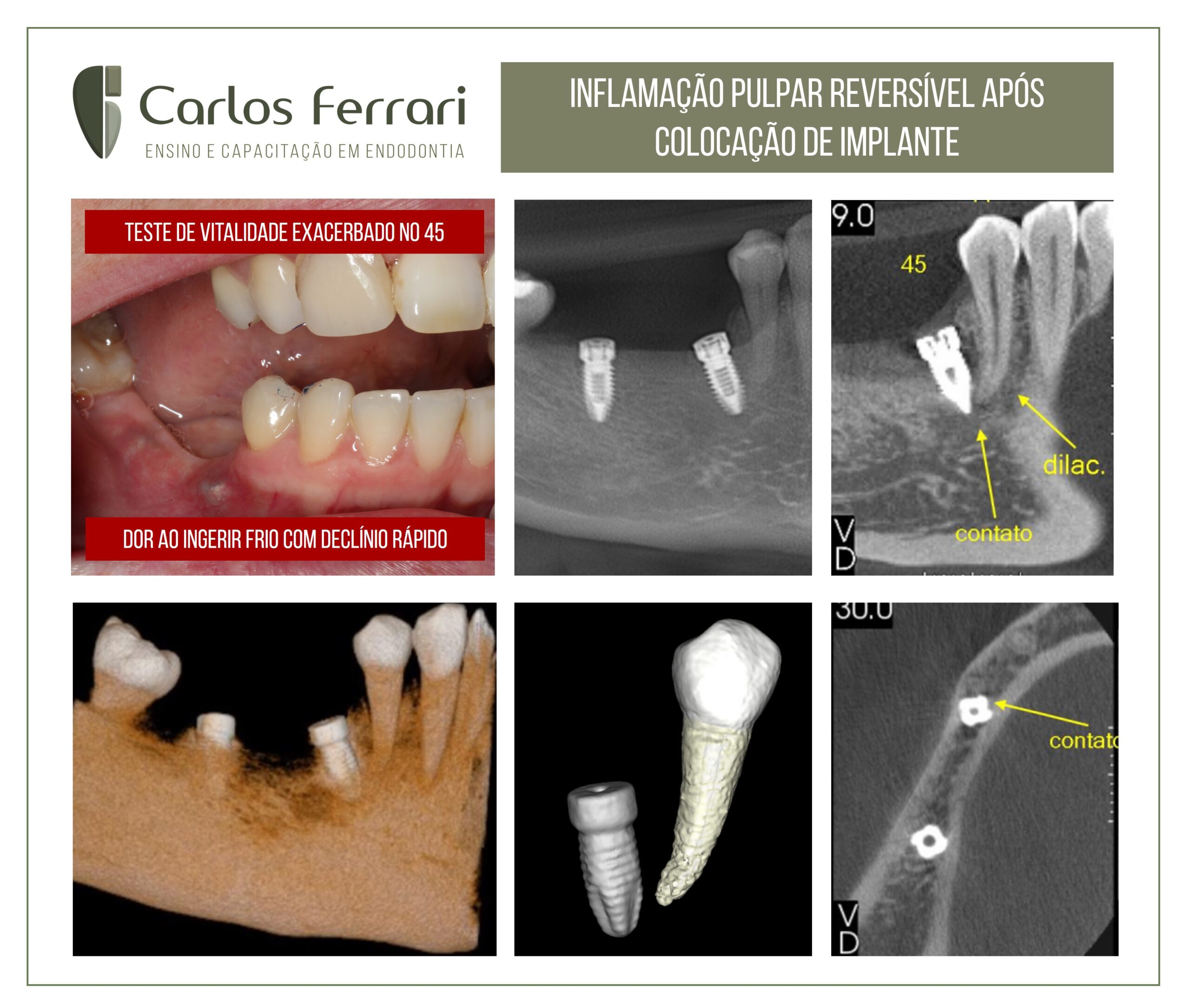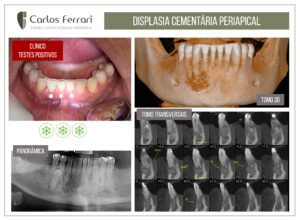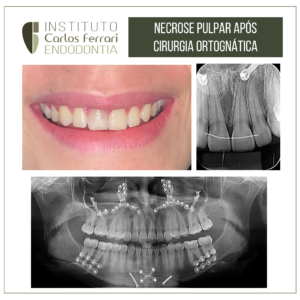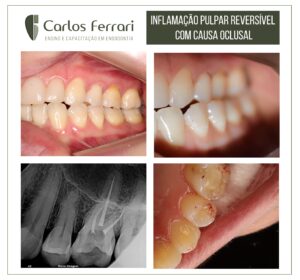Inflamação pulpar reversível. Caso após a colocação de implante adjacente ao dente algógeno.
Paciente foi encaminhada pela clínica de implantodontia, com queixa de dor provocada ao ingerir líquidos frios, constante, de declínio rápido, localizada no dente 34. A dor iniciou-se uma semana após a colocação de um implante adjacente ao dente, três semanas antes e o ajuste oclusal feito anteriormente não resultou em qualquer melhora no quadro. No exame clínico, dor levemente exacerbada no referido dente, em relação aos dentes 33 a 31. Os exames radiográfico e tomográfico revelaram implante em íntimo contato com a região apical do dente 34, porém sem tocá-lo.
A paciente foi orientada a tomar analgésico (dipirona), quando houvesse dor e se estudava a remoção do implante. No retorno após um mês, a dor havia cessado espontaneamente e o teste térmico produziu dor com a mesma intensidade dos dentes contíguos.
Pressupôs-se, portanto, que o quadro de inflamação pulpar reversível foi causado por um processo inflamatório na região periapical, e que ao evoluir para reparo, fez com que a inflamação na polpa também desaparecesse.
O caso alerta para a importância da observação cuidadosa dos fatores causais das inflamações pulpares, fazendo-se a proservação cuidadosa, sem pressa, quando não há necessidade imediata de intervenção de urgência.
A inflamaçõe pulpar reversível, quando atendidas pelo especialista em endodontia, geralmente tem causas de mais difíceis detecção, do que as mais comuns, como cárie e doença periodontal.
Muitas vezes o paciente já passou por mais de um cirurgião dentista, sem que um diagnóstico tenha sido apontado e já se encontra desiludido e pouco colaborador durante o processo de pesquisa da causa. As mais frequentes são contatos oclusais prematuros, apertamento dental, lesões cervicais não cariosas, próteses removíveis mal adaptadas, hábitos nocivos, entre outros de menor frequência. Cabe ao profissional tentar o diagnóstico com paciência e critério. Muitas vezes a real causa não é descoberta logo no início do atendimento.





